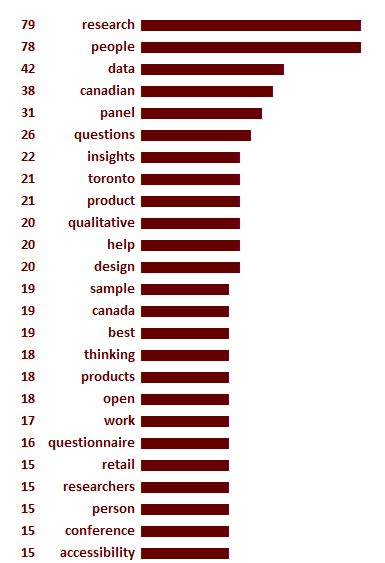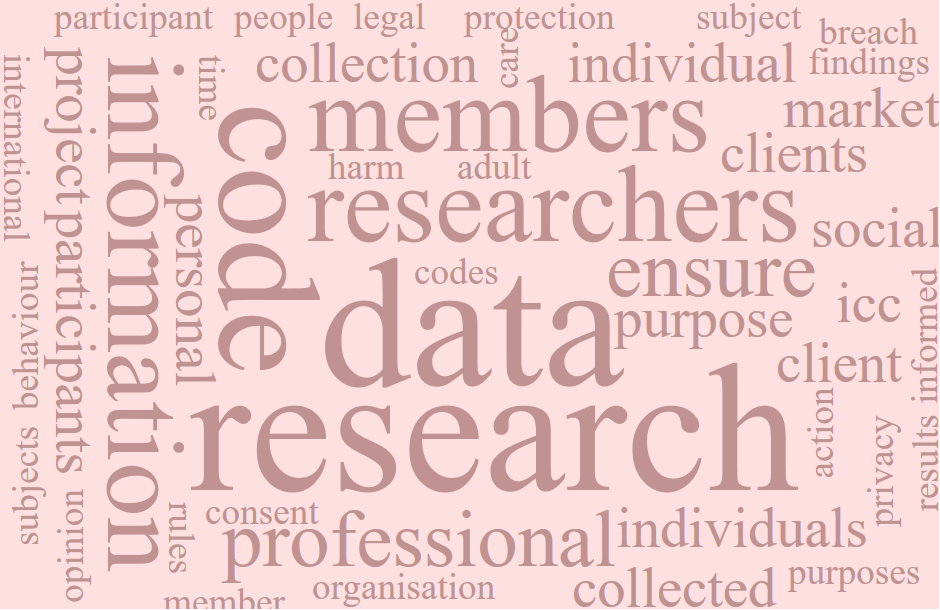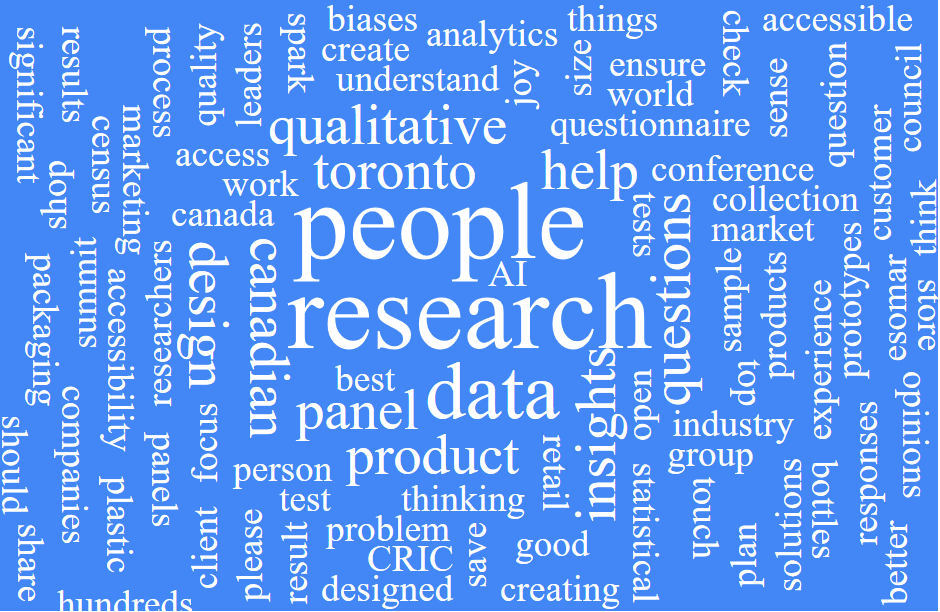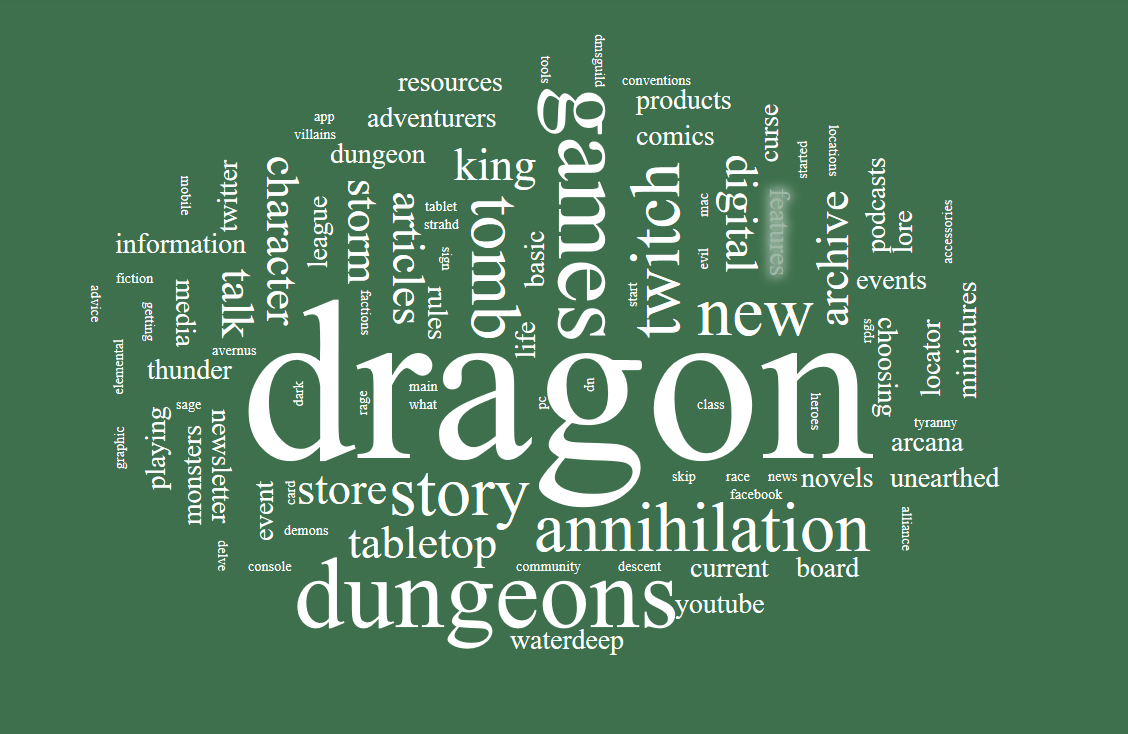Word clouds are commonly used to visualize textual data from focus groups and interview transcripts, or verbatims from questionnaires. If you’ve read anything in the data visualization or user design literature, you’ve noticed that they have a bad reputation. But word clouds aren’t necessarily a bad data visualization. Rather, they’re an inappropriately used data visualization.
How are word clouds used incorrectly?

- Sometimes, word clouds are used to replace an abstract or executive summary of the research findings and this is never a good idea. Word clouds can offer interesting imagery to support an abstract but they don’t have the necessary power to stand alone as the abstract. They can’t answer questions of why and how which is one of the key requirements of an abstract.
- As tempting as it might be, word clouds cannot be treated as quantitative data with which to draw generalizable, valid, and reliable decisions. If you must make those types of decisions, then quantitative data needs to be gathered. As an example, even in the word table you see here, the word counts illustrated by the length of bar do not correspond perfectly. Yes, the larger numbers have longer bars, but it’s not a 1 to 1 match. Word clouds can make this discrepancy even larger.
- Word clouds often take concepts out of context and misconstrue ideas. This is because the process of creating word clouds means that some phrases may be cut into individual words, random words may be excluded to make space for other words, and longer words take more visual space which makes them seem more important. In a very simplistic example, we know there is a big difference between “not happy” and its individual words “not” and “happy.” Similarly, “share of voice” generates very different thought processes than “share” and “voice” do. As a result, we cannot take concepts from word clouds as concrete outputs.
How can market researchers use word clouds to their advantage?
Despite all those negatives, there are some real advantages to using word clouds to understand unstructured text from focus groups, interviews, and questionnaire verbatims.

- Word clouds are a great way to instantly identify the theme being communicated. For example, in the first word cloud here, it’s clear that the topic under consideration is a professional code about data and research which somehow pertains to clients, participants, individuals, and researchers. In fact, this cloud is based on all the words contained within the codes of professional conduct from ESOMAR, MRS, and AMSRS.

- Word clouds are also a great way to understand the word choices that people make. As you can see in the second word cloud, the most common words are research, people, data, Canadian, and Toronto. The language is precise, local, and professional. There is no slang or profanity. There are few acronyms. There are few personal, emotional words. And while many of the words are long, they are not complicated and they don’t reflect jargon. If you haven’t already guessed, this word cloud reflects the most recent posts on the Canadian Viewpoint blog. Clearly, we take a no nonsense and human approach to sharing educational content about marketing research.

- One of the greatest advantages of word clouds is that they are accessible to everyone regardless of their comfort level with numbers or statistics. Anyone can easily and quickly identify the words that pop and what’s being communicated. Whether you’re working with a quantitative researcher, a brand manager, or a fresh and bright-eyed intern, everyone who receives a good introduction to the technique can draw insights from a word cloud. I probably don’t need to specify where the words for this third word cloud come from.
- Finally, word clouds are a colorful and attractive device to create an emotional connection among users, particularly within a report that might otherwise be textually dense. Clouds can spark conversation and lead to insightful questions worthy of being tested with more rigorous methodology.
When word clouds are used properly, they can really brighten up a report and create insightful conversation. If you’re curious to learn more, our tools allow you to customize word clouds within your desired parameters. We’d love to show you how it works so please get in touch with us!
You might like to read these:




